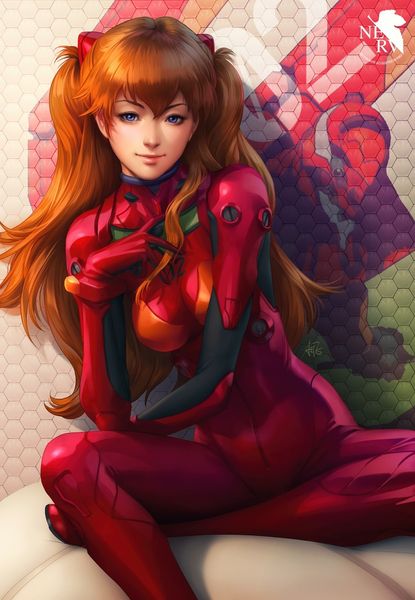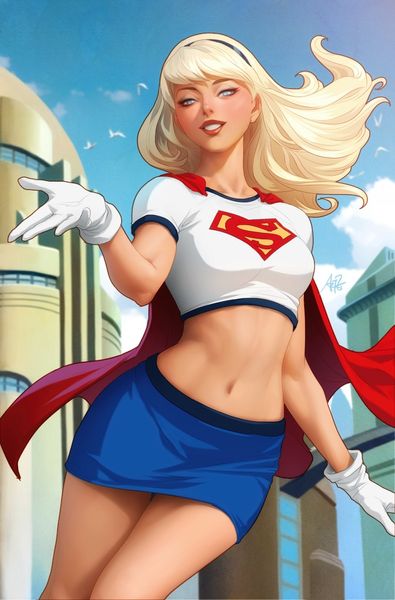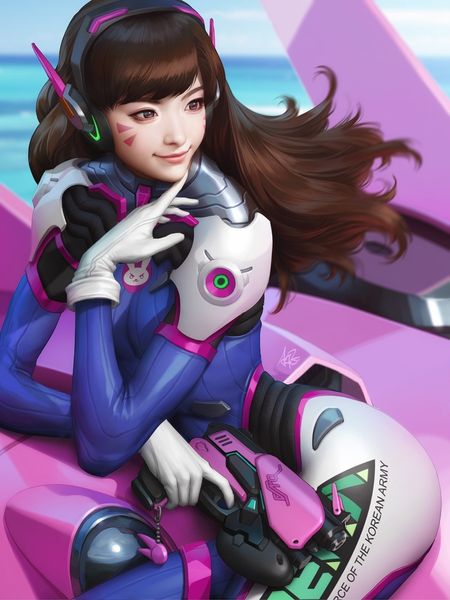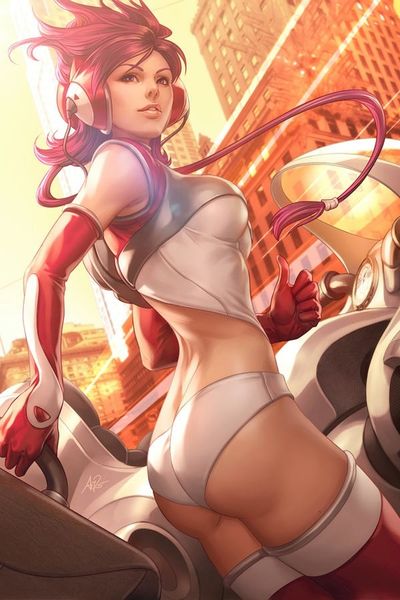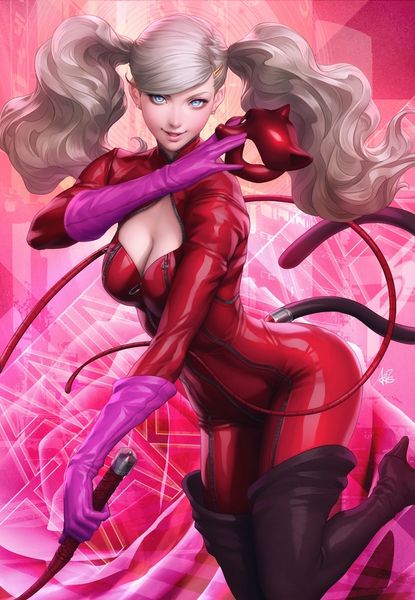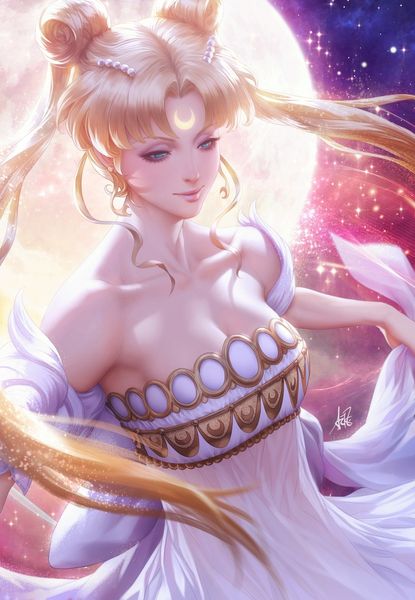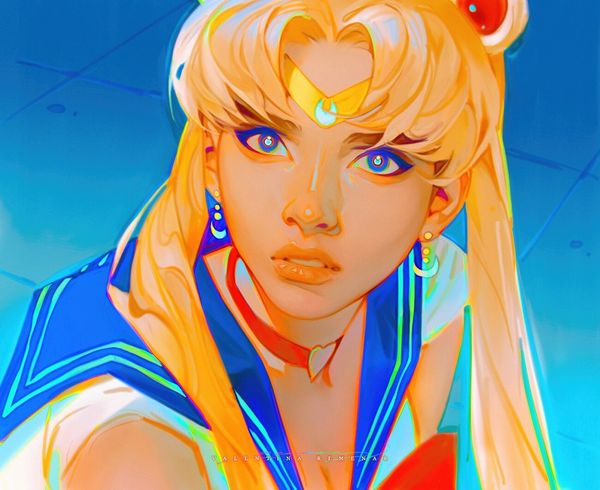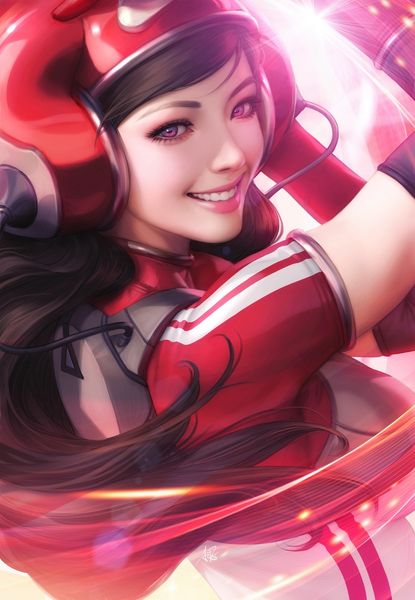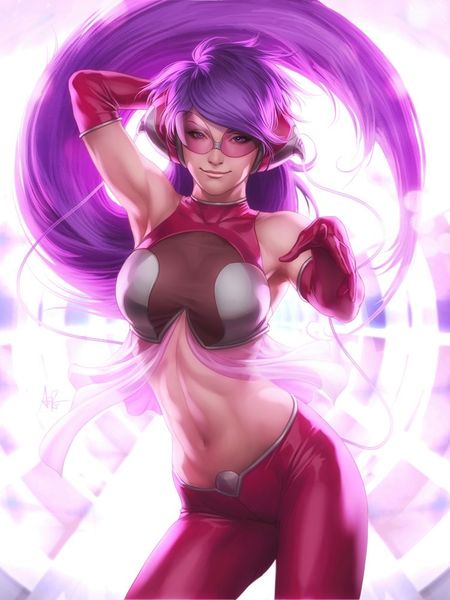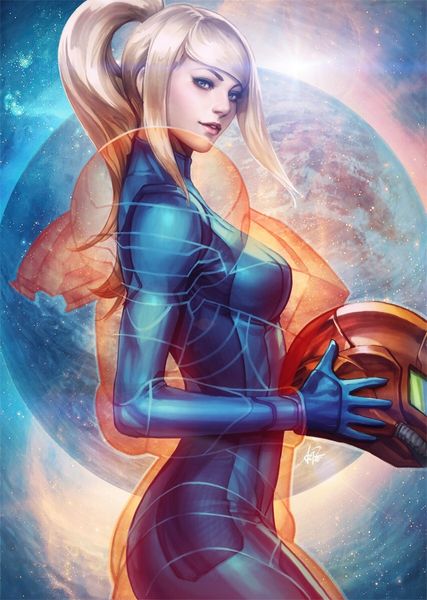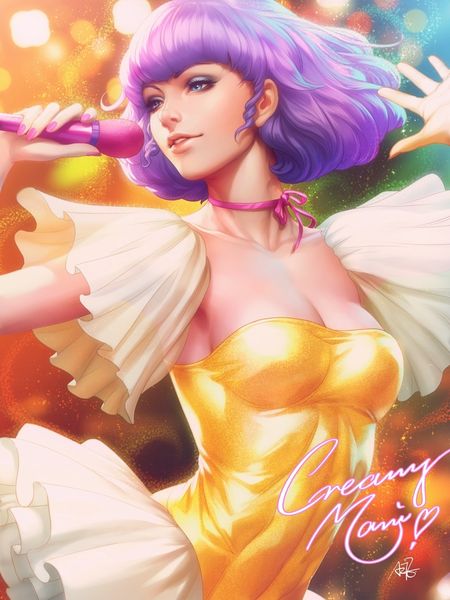
acrylic-paint
#
portrait
#
facial expression reference
#
caricature
#
acrylic-paint
#
figuration
Copyright: Public Domain: Artvee
Editor: Stanley Artgerm Lau created this acrylic portrait, "Peachy Princess Ver.2." There is something really captivating about the detail and texture; I'm wondering, from your point of view, what artistic elements stand out? Curator: The most compelling aspect, from a formalist perspective, is how the artist manipulated light and shadow to define form. Observe how the planes of the face and the folds of the fabric are sculpted, creating depth and volume through carefully calibrated gradations of color. This is all meticulously constructed, independent of the subject matter itself. Do you notice the high level of polish typical of digital media today? Editor: Absolutely. It's so clean, almost hyper-realistic in its rendering. What effect do you think this has on the viewer? Curator: The hyper-realism flattens the viewing experience onto the surface, a shallow depth that creates a pictorial sensation rather than one of meaning. The chromatic choices here further reinforce this: the stark color combinations produce a vibrancy that pulls the spectator in but may deter deeper considerations. It makes you appreciate the craftsmanship. Do you think it reflects or refracts its subject? Editor: It makes it hard to look beyond the polish! It almost objectifies the character to render this work as something that resembles promotional material. But the control over light and color—how the eye is drawn to certain areas—is undeniable. Curator: Precisely! By focusing on the structural relationships between these artistic elements, one may gain insight into how our interpretations are, in essence, culturally directed visual phenomena, irrespective of the represented form or intention. Editor: This discussion reframed my view of portraiture—appreciating not only what is represented but how these portraits are designed to be seen. Curator: Yes. When viewed formally, we get beyond iconography and into the poetics of color, form, line and materiality.
Comments
No comments
Be the first to comment and join the conversation on the ultimate creative platform.
